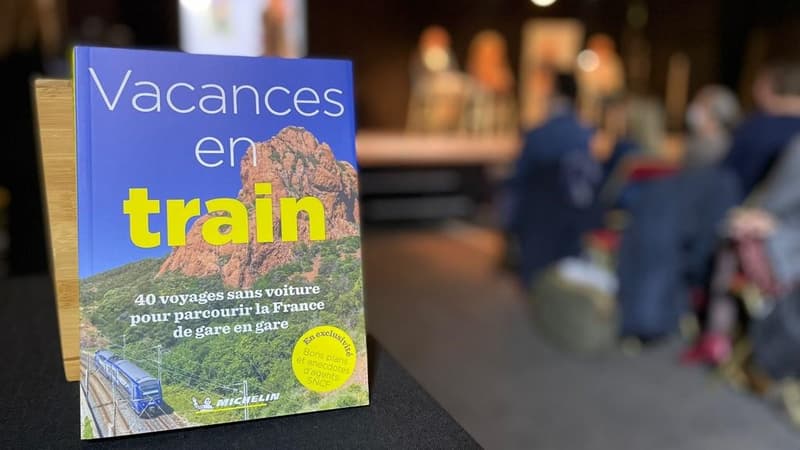Tourist guides offering train itineraries are multiplying on bookstore stalls, echoing the growing number of travelers who want to avoid flying or taking the car to go on vacation. “There is a real resurgence of the attraction to the train,” testifies Vincent Barbare, CEO of Edi8, the Editis subsidiary that publishes Lonely Planet guides in France.
“When I was 20 years old, the question was not whether to fly or not, it was whether I had the money to leave. Today, I see it with my children’s generation, how to get around is becoming an important criteria in determining the destination,” she says: “I want to travel but I don’t want to take the plane, so it’s the train. So, I can’t go everywhere!”
With few exceptions, rail tourism guides are therefore limited to Europe and propose to combine the train with bicycle tours or a bit of walking.
“I saw the change in my activity after the Covid crisis”, with “a real boom from 2021”, he says. And promise new publications, after the first two volumes on Italy and northern Europe by train.
more or less realistic
Same speech at Michelin, where “we are thinking of other titles” after two books on France and Occitania in TER. “We are also gradually reinforcing the place of the train in the Green Guides”, underlines Philippe Orain, director of the travel guides with the image of “Bibendum”.
Most market guides offer more or less realistic itineraries, preceded by more or less practical advice. Barcelona-Stockholm or Amsterdam-Split in Lonely Planet. A loop in Scotland at Hachette. Limoges-Vierzon in Michelin. Or even a daring bet in Gallimard that offers, despite the war in Ukraine, a route from Kiev to Odessa and Lviv, in a guide published in 2023. Even a Sofia-Athens route… where in fact there are no trains anymore.
Many books seem to care little about the schedules or the absence of ticket offices in many stations, which can be a problem if you want to stop on the way.
praise of slowness
The authors warmly call for “rediscovering the pleasures of slowness”, as the Tao guides.
On the border between travel guides and beautiful books, these books find their place, admits Stéphan Szeremeta, editorial director of Petit Futé. “Subject guides are always more difficult because customers don’t know where to find them in the bookstore,” he says. According to him, they are “quite inspiring”, especially useful for building itineraries.
railway heritage
By the way, these guides are interested in railway heritage. Le Petit Futé invites you to stop at the Latvian Railway History Museum in Riga. The editions of La Vie du rail even offer a very extensive guide to rail tourism and leisure in France.
Michelin, for its part, has partnered with the SNCF for its “Train Holidays” that invite you to travel around France in TER, with testimonials from railway workers in favor. But if you bought guides, the SNCF didn’t pay anything. The company “takes no action” to promote rail travel, a spokesman says. She helps out where necessary and is delighted by this editorial enthusiasm:
In this palette of recent guides, the Backpacker is conspicuous by its absence. “We really can’t make a general guide on trains,” judges his boss Philippe Gloaguen. “It is a very special science, each country has its own policy!” But “we always talk about it in all our guides, always,” he insists.
Source: BFM TV


